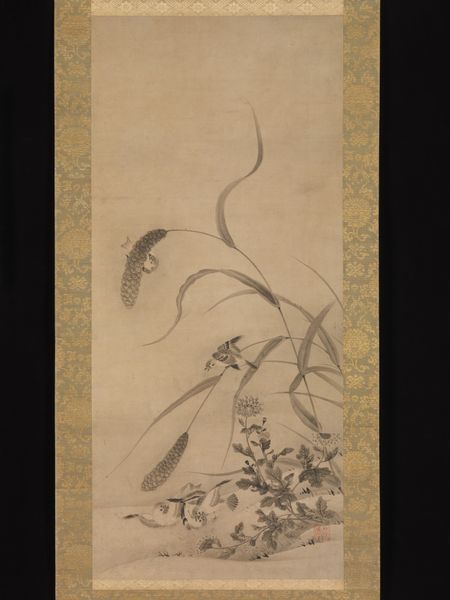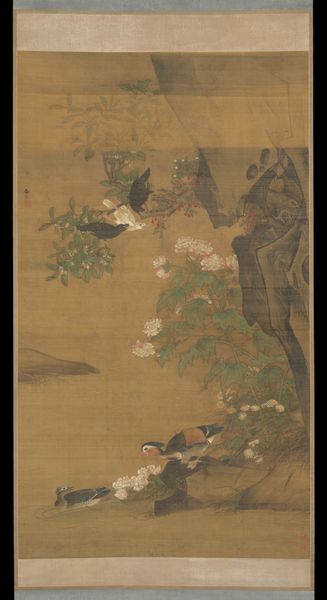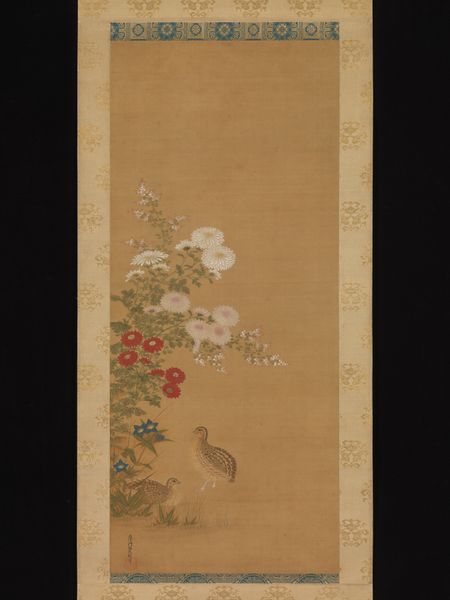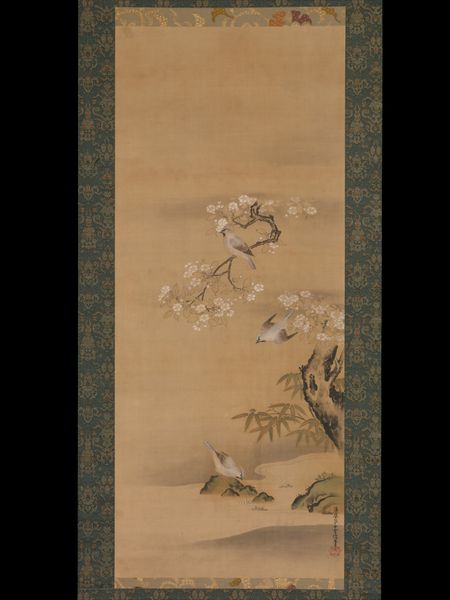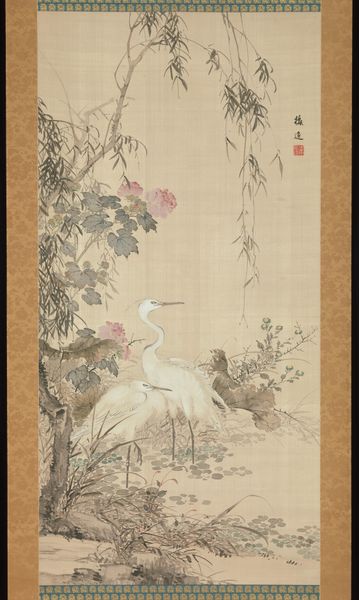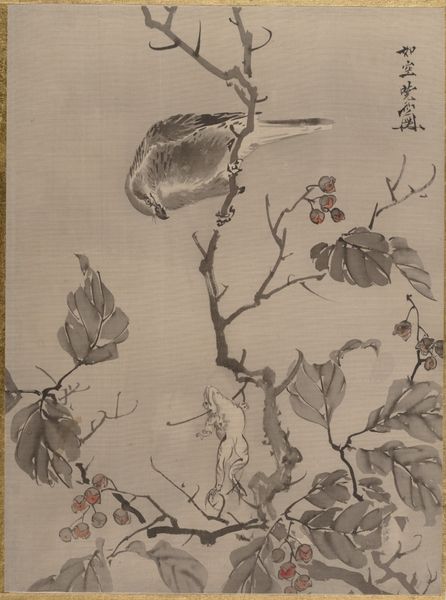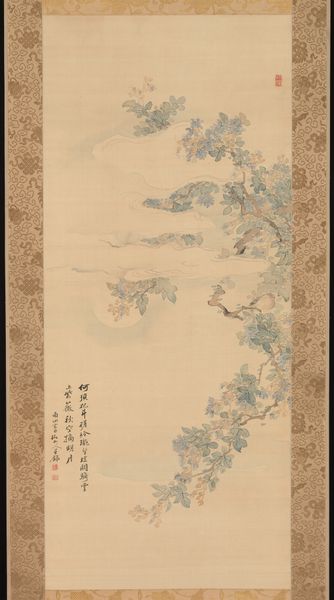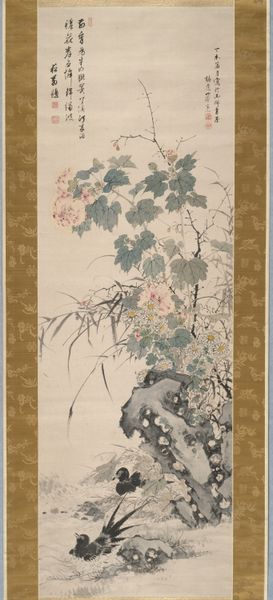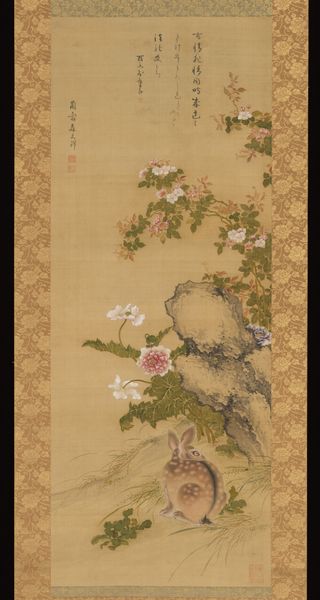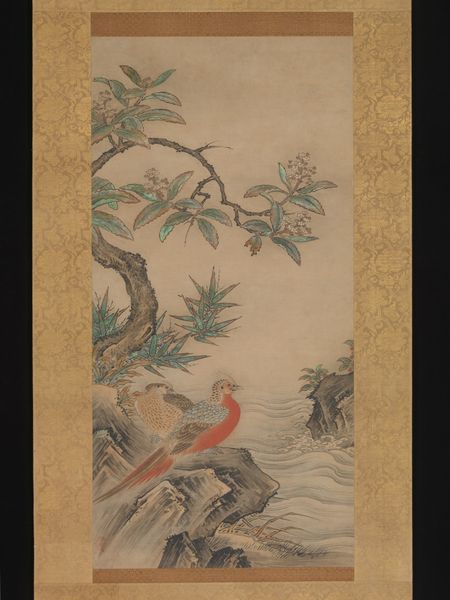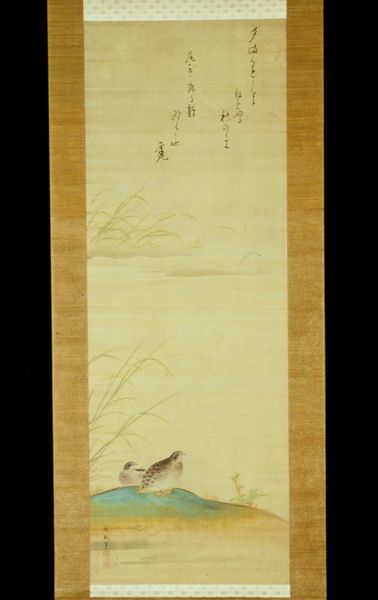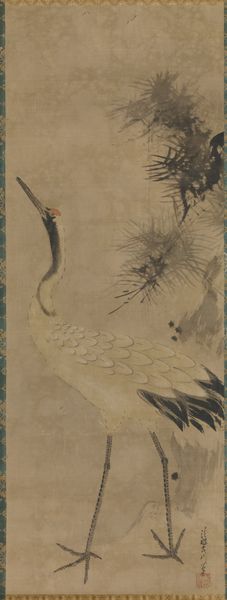
tempera, painting, watercolor
#
tempera
#
painting
#
asian-art
#
landscape
#
ukiyo-e
#
oil painting
#
watercolor
#
orientalism
Dimensions: Image: 46 5/8 × 22 3/16 in. (118.5 × 56.3 cm) Overall with knobs: 69 × 28 1/16 in. (175.2 × 71.2 cm) Overall with mounting: 69 × 26 in. (175.2 × 66.1 cm)
Copyright: Public Domain
Tosa Mitsuoki painted Egrets and Cotton Roses during the Edo period in Japan using ink and color on silk. Egrets, often symbols of purity and elegance, are prominently featured alongside cotton roses, which can symbolize fleeting beauty due to their short-lived blooms. Together, they evoke a sense of serene transience, reflecting the impermanence of life. Consider the egret: in ancient Egyptian art, birds often represented the soul’s journey. Later, in Christian iconography, the white bird symbolized purity and the Holy Spirit. Here, the egret stands with similar connotations, yet adapted to a Japanese aesthetic sensibility that values simplicity and naturalness. The elegant form of the egret is a visual echo of similar depictions of birds across cultures, each iteration carrying its own symbolic weight yet tied to a universal appreciation of nature's beauty. Observe how the artist subtly engages our subconscious, using familiar motifs to tap into deeply rooted emotions and shared cultural memories. This is how art transcends time, connecting us to the past while speaking to our present.
Comments
No comments
Be the first to comment and join the conversation on the ultimate creative platform.
